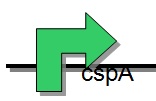Team:Mexico-UNAM-CINVESTAV/Project/Our project
From 2010.igem.org
m (minor edit) |
m (take all the quotes) |
||
| Line 25: | Line 25: | ||
| - | |||
| - | |||
| - | |||
| - | |||
| - | |||
| - | |||
| - | |||
| - | |||
| - | |||
| - | |||
| - | |||
| - | |||
| - | |||
| - | |||
| - | |||
| - | |||
| - | |||
| - | |||
| - | |||
{{Mexico-UNAM-CINVESTAV-FOOTER}} | {{Mexico-UNAM-CINVESTAV-FOOTER}} | ||
Revision as of 03:37, 26 October 2010
PROJECT
First we organize a cold regulation system at post-traductional level using a constitutive gene that E. coli has to cope with a sudden downshift (from higher temperature down to 15ºC up to 10ºC). Also we had added an antifreeze protein, in order to help the cell to prevent water from undergoing a freezing process creating strong hydrogen bounds and inducing a vitrification process rather than a normal crystalization process. In that way the cytoplasm and the cell membrane did not damage at freezing temperatures. This both strategies may create new biobricks that can function as a “mini cold kit” to both synthesize proteins and build an E. coli mutant that allow us to work with it at low temperatures. Even we know about comercial freeze induced vectors as the P. cold, we also know this vectors are patented. As we are trying to have a non patented assembly in the IGEM comunity we want to compare this vectors with us. In that way our "mini cold kit" would be available for anyone. We are also trying to overcome other human issues like the plants and crops maintenance, in order to survive the cold weather countries like Canada, USA, Northern European countries and of course the frosts occurring in the north of Mexico and high mountains of country. In order to improve efficiency to our cold system we build four constructions to prove the different kind of regulation that the mechanism can allow.
• Firstly we took the promoter with all the parts involved, from the promoter polymerase-binding zone, to the Downstream Box that is inside the protein DNA sequence.
• In a second construction we took all the regulation system except the promoter to define if another promoter different to the CspA can be regulated with the freeze system.

• We also have the CspA promoter alone so we can put it controlling another gene and see if this can function at low temperatures.

• For a final construction, we took the Cold Box, the UTR region and the Shine-Dalgarno sequence with the exception of the Downstream Box and the promoter since we are not sure if having two methionines at the beginning of the protein shall cause problems to the translational system in the ribosomes, even if it’s an important point of regulation in the freeze system. Despite we have founded in some reports that the freeze system could be express under these conditions, we are trying to confirm this and to valuate which construction is better.

 |
 |
 |
 |
 "
"





